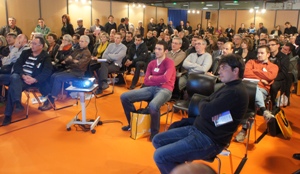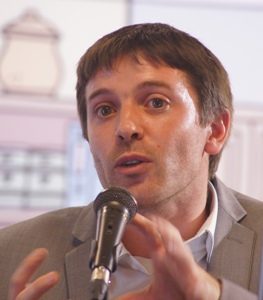All the sessions at Parasitec are, perhaps unsurprisingly, conducted in French, so it was time for the Pest editorial team to concentrate hard and try to remember enough of the language, learned many years ago, to keep up with the presenters. Thank goodness for PowerPoint as seeing the words written down, as well as spoken, definitely helps!
The session on bed bugs began at 14.00 but, as the French still observe a decent break time for lunch, there was no presentation immediately before it. Fortunately we took our seats in good time because the room rapidly filled up and it was very soon standing room only – evidence, if it was needed, of the level of interest in this pest in France, as it is around the globe.
In contrast to the usual approach in the UK, where a chairperson introduces the speakers and keeps them broadly to time, there was no preamble. At around 14.10 the speaker rushed in – clearly he was running late and had just arrived. He took of his coat and scarf, plugged in his laptop and was off. The speaker was Arnaud Cannet, who was described in the programme as an entomologist engineer from the University Hospital Centre in Nice
|
Global explosion He said that whilst they do not transmit disease, they can cause allergic reactions and for many people an infestation is the cause of considerable anxiety and mental strain so they cannot be ignored as a public health pest. So what approach did he recommend? To summarise he emphasised the need for integrated pest management in combating bed bugs and he identified a six point plan of action:
Treatment of apartments |
|
|
|
Early detection is the key alongside information so that people understand the ways in which bed bugs can be introduced to their apartments – car boot sales, second hand furniture shops and so on. He recommended thorough inspection and where suitable washing at high temperatures before introducing such items into the home. He also emphasised the need for mechanical as well as chemical controls for two reasons. Firstly to combat resistance especially to the pyrethroids and secondly because the number of insecticides available in Europe is falling as fewer and fewer are authorised for use in the EU. |
||



